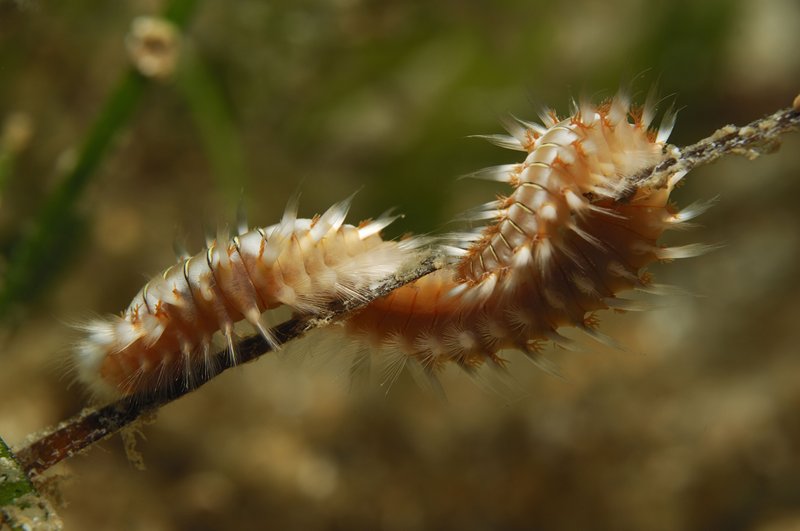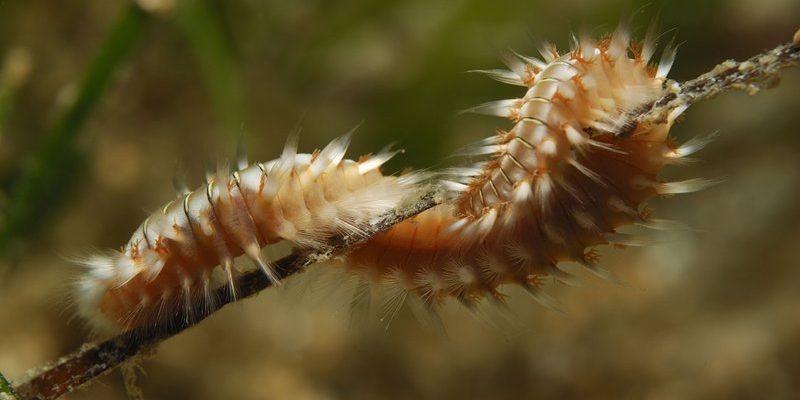
Picture this: You’re sitting at the edge of a beautiful coral reef, watching the vibrant marine life interact. Then, suddenly, the water becomes a flurry of activity as bristle worms start releasing eggs and sperm into the sea. This chaotic yet beautiful moment is crucial for their reproduction. It’s nature’s way of ensuring that their species continues to thrive. So, let’s dive a bit deeper into the world of bristle worms, focusing on their spawning habits and how it might affect your aquarium.
What Are Bristle Worms?
Bristle worms, or **polychaetes**, are segmented worms that belong to the class Polychaeta. They’re often found in marine environments, from coral reefs to tidal pools. You might also come across them in your aquarium if you keep a saltwater setup. These worms have bristles, or chaetae, which help them move and navigate their environment.
Here’s the thing: while many people might find these worms a little creepy, they play an essential role in the ecosystem. They help break down organic material and serve as a food source for various marine animals. Understanding their role can help you appreciate their presence rather than fear it.
Bristle worms can vary in size, from a few inches to over a foot long. Some are even brightly colored, adding a splash of life to your tank. Overall, they are crucial for maintaining the balance of your marine environment.
How Often Do Bristle Worms Spawn?
Bristle worms are known for their unique spawning rituals, which can seem a bit mysterious. Typically, these worms **spawn periodically**, often in response to environmental cues like changes in water temperature, salinity, or even lunar phases. On average, you might see them spawn several times a year, but the exact frequency can vary.
During spawning, bristle worms release clouds of eggs and sperm into the water. This usually happens during warmer months or specific lunar events, like a full moon. It’s almost like they synchronize their internal clocks with nature’s rhythms. Isn’t that fascinating?
If you’re keeping bristle worms in your aquarium, be prepared for these spawning events. It’s a natural part of their life cycle and can sometimes lead to a “bloom” of new worms if conditions are just right. Just think of it as nature’s way of ensuring the survival of the species.
What to Expect During Spawning
During a spawning event, you might notice some changes in your aquarium. First, prepare for a **cloud of tiny eggs** and sperm floating in the water. This cloud can create a bit of a stir among other inhabitants of your tank, as they might feast on these microscopic morsels.
Here’s where it gets interesting: after spawning, the fertilized eggs will develop into larvae. These larvae are often planktonic, meaning they float around in the water column and can easily be swept away by currents. In a natural setting, this increases their chances of survival by dispersing them over a wider area.
Now, if you’re worried about overcrowding your tank, it’s essential to monitor the situation. As the larvae grow, some may settle down and become new bristle worms in your aquarium. If you prefer a more controlled environment, consider adding some natural predators, like certain fish or invertebrates, that will keep the population in check without disrupting the ecosystem.
How to Prepare for Spawning
If you’re anticipating bristle worm spawning, there are a few things you can do to prepare your aquarium. First, keep an eye on your water quality. Make sure your parameters—like **salinity**, pH, and temperature—are stable. Healthy conditions will ensure that your bristle worms can thrive and reproduce effectively.
Consider adding some **live rock** or other natural substrate to your tank. This can provide hiding spots for new larvae and help create a more natural environment. The more you mimic their natural habitat, the more likely they’ll thrive and reproduce.
You might also think about what other creatures you have in your tank. Some fish and invertebrates could enjoy munching on bristle worm larvae, keeping the population in check. It’s all about balancing your ecosystem while enjoying the beauty of these worms.
Common Concerns About Bristle Worms
While bristle worms can be beneficial, many aquarists worry about their presence. For one, they can reproduce rapidly, which may lead to overcrowding in your tank. If left unchecked, this can disrupt the balance. But don’t worry; with the right strategies, you can manage their population effectively.
Another concern is their potential to damage corals or other tank inhabitants. While most bristle worms are harmless, some species might nibble on corals or detritus. To minimize damage, it’s wise to identify what species you have in your tank and take steps to control their numbers if necessary.
If you’re feeling overwhelmed, remember that knowledge is power. Understanding these creatures will help you make informed decisions about your aquarium.
Bristle worm spawning may seem like a small detail in the vast world of marine life, but it represents the beauty and complexity of nature. By understanding how often bristle worms spawn and what to expect, you’ll be better equipped to manage your aquarium.
Embrace these moments as part of your marine journey. With the right preparation and awareness, you’ll find that bristle worms can contribute positively to your tank, turning what some view as a nuisance into an exciting display of nature’s wonders. So next time you notice these little critters busy at work, you can appreciate their role not just in your aquarium, but in the broader marine ecosystem. Happy fish keeping!

